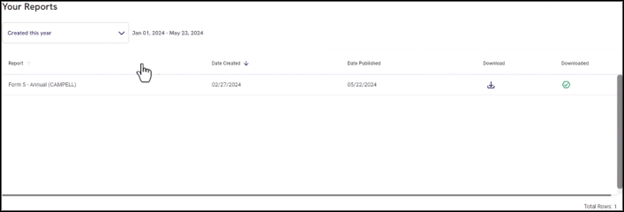
Understanding Your Dose Information
If you are wearing a dosimeter, you may have questions about what your dose data means, if your dose is safe, and what your annual dose is.
LANDAUER provides a portal for dosimeter wearers called Individual Dose Review (IDR). Access to the portal is provided by the RSO or dosimetry program manager from within myLDR.
Once access is enabled, you will receive an email with a link to log in to IDR. After login, a dashboard displays dose history which can be viewed by quarter or annually.
Watch the video below to learn how to log in and use IDR.
Dose results are provided for the Whole Body (DDE), Lens of the Eye (LDE), Skin (SDE), and Extremity (EXT). Details for each category of exposure and comparison to prior dosimeter wear periods are displayed. If applicable, Neutron exposure is provided (e.g., in Radiation Therapy).
Dose Limits and Action Levels
Radiation exposure limits and guidelines are in place to ensure your safety and prevent unnecessary exposure. Familiarize yourself with the following:
- Annual Dose Limit: The maximum allowable radiation exposure for a calendar year. In the United States, this limit is 5,000 mrem (50 mSv) for occupational exposure.
- ALARA Investigational Levels: Specific exposure values that trigger additional actions, such as verified communication, training, or corrective measures.
Note: Your RSO may have established ALARA investigation levels or “trigger levels” that are more stringent than regulatory dose limits. For example, an ALARA Level 1 investigation is typically conducted when a dose exceeds 10% of the dose limit. An ALARA Level 2 investigation might be established when a dose exceeds 30% of the dose limit. Outside the United States, most countries have adopted the dose limits specified by the International Commission on Radiological Protection (ICRP).
| Part of Body |
Investigational Level I (mrem/quarter) |
Investigational Level II (mrem/quarter) |
| whole body, head, trunk including male gonads, arms above the elbow, or legs above the knee | 125 [1.25 mSv] | 375 [3.75 mSv] |
| hands, elbows, arms below the elbow, feet, knees, legs below the knee, or skin | 1,250 [12.5 mSv] | 3,750 [37.5 mSv] |
| lens of the eye | 375 [3.75 mSv] | 1,125 [11.25 mSv] |
Source: NRC NUREG 1556, Vol. 9, Program-Specific Guidance About Medical Use Licenses, Appendix M, Model Procedures for Occupational Dose Monitoring Program.
When reviewing your exposure data, consider the following:
- Compare your exposure values to the exposure limits specified in the report. If your exposure exceeds these limits or an established ALARA investigational level, you will likely be contacted by your RSO who may provide remedial safety training or recommend actions to maintain your dose ALARA
- Unusual or unexpected exposure patterns (e.g., high or unusually low doses) could indicate a potential radiation safety issue
- Check for any errors or discrepancies in the report, such as incorrect badge assignments or missing data
Employees can also view and download various reports from the IDR, such as the annual Form 5v. The Form 5 report provides the total dose received by an employee during a calendar year.

Conclusion
Interpreting the radiation dosimetry report is essential for maintaining a safe working environment and complying with regulations. IDR provides employees access to their dose records. By understanding the dosimetry report and the components of IDR, exposure data, and limits, you and your RSO can:
- Identify potential radiation safety issues
- Take corrective actions to minimize exposure
- Comply with regulations and guidelines
- Ensure your safety and the safety of others in the workplace
If you have any questions or concerns about the radiation dosimetry report or the Individual Dose Review, don't hesitate to reach out to your RSO or radiation safety team.

